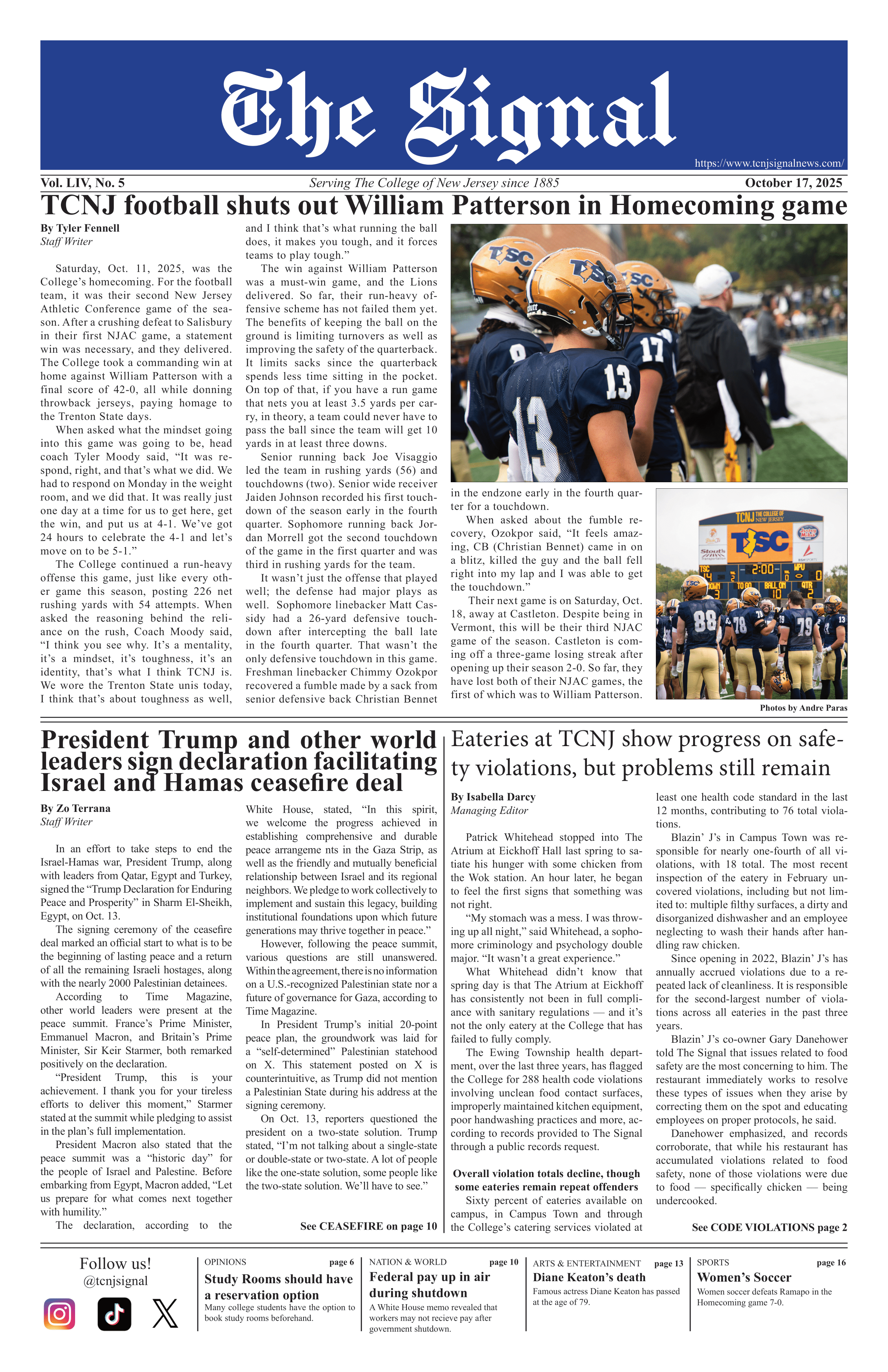By Janjabill Tahsin
Correspondent
The Good News Lion is the Nation & World section’s biweekly news segment, highlighting positive news in the country and around the world. The theme of this article is looking forward to the future.
10,000 Syrians find refuge in “City of Hope” in northern Syria
In the northern Syrian region of A’zaz, the “City of Hope” was built and opened on Jan. 29, ready to provide refuge for Syrians affected by the civil war with all the necessary facilities for families displaced by the war.
The humanitarian project was built through the collaboration of the Turkish Humanitarian Relief Foundation and the Qatar Charity organization, and it will accommodate around 10,000 people, according to the Sarajevo Times.
The project spans a plot of 280 acres, consists of nine neighborhoods and includes 1,400 housing units, 1,200 units of which are 50 square meters each and 200 units at 100 square meters each. According to the Anadolu Ajansı, the project also has a mosque, four schools, a sports center, a clinic, a conference hall and a marketplace with 50 shops.
“The city is a gift to the Syrian people who have suffered for 14 years due to the brutal war and have been forced to flee,” said Yosef Al-Kuwari, CEO of Qatar Charity.
Since March 2011, the Syrian civil war has displaced millions of Syrians within the country, while many have fled abroad. Those who are displaced within Syria mostly live in overcrowded refugee camps in the north of the country, currently living in extremely difficult conditions in the Bab al-Salam refugee camp.
“Today, we are here to open our ‘City of Hope,’ which is a symbol of hope and solidarity,” said Durmus Aydin, IHH Secretary-General. “However, we have never abandoned the Syrian people. Today, we are here with Qatar Charity. We are happy to bring to life a new and most extensive project.”
Chromium pollution converted into essential nutrients
Researchers at the University of Waterloo in Canada found that a special form of charcoal, biochar, produced by heating agricultural waste without oxygen, is highly effective at absorbing toxic chromium and transforming it into its safer form.
According to the Good News Network, chromium, a heavy metal, exists in two forms. Chromium(III) is “a safe micronutrient that the human body needs,” while chromium(VI) is a dangerous carcinogen associated with ovarian, lung and liver cancers and reproductive problems.
Chromium(VI) is generally created during industrial processes, including leather tanning, stainless steel production and mining. It can also naturally occur in the presence of manganese minerals.
However, through the natural filtering ability of organic carbon, biochar can be a potential tool for removing chromium pollution from industrial sites. Biochar may potentially also be used as a tool to monitor groundwater remediation efforts.
Prisoners around the world serve less time for every book they read
For the past 13 years, the Brazilian government has offered its incarcerated citizens an opportunity to read a book to serve less time.
For decades, the Brazilian criminal justice system was failing its 1984 mandate, which requires prisoners to have access to programs that will allow them to reenter society. Brazil currently has the 15th highest imprisonment rate in the world with a recidivism rate of more than 80%.
This “Remission for Reading” program provides incarcerated individuals with access to the prison library, which includes books in braille and audiobooks for those with poor eyesight regardless of literacy skills or mental faculties.
When a book is checked out, an incarcerated person has 21 to 30 days to finish it, depending on the page count, and then 10 days to demonstrate their knowledge of the text by completing a written book report. They offer assistance to those who speak different languages or have intellectual impairments.
For every report, the individual’s sentence is commuted by four days, and they can submit up to 12 per year, which, if fully utilized, equals 48 days of commuted sentence, according to the Good News Network.
According to UNESCO, a study conducted by the Brazilian Institute of Public Opinion and Statistics found that Brazil’s incarcerated citizens read nine times more than the national average of five books per year.
In a news release, the creative director of the advertising agency Artplan said, “Carambaia is a publisher focused on those who are passionate about reading, and we find that no one reads more than the prisoners. By giving voice to them and using the texts they produced, we show society that they are thinking, critical beings with their own opinions, which must be respected.”
The “Remission for Reading” program is now serving as a template for other nations, including Kazakhstan and Uzbekistan, whose prison populations are enjoying similar deals.







